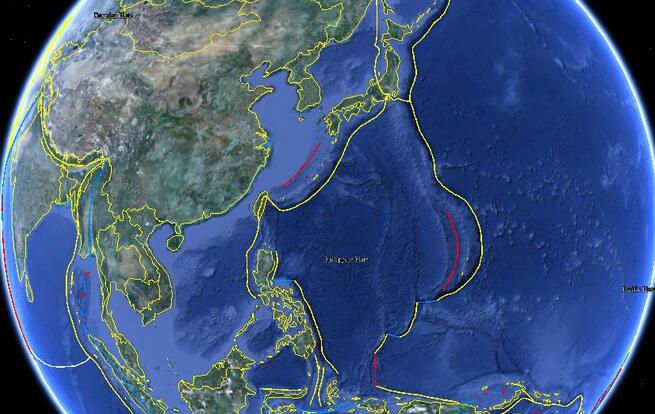Narrator: Listen to part of a lecture in a geology class.
聽一段地理課。
Professor: As we've discussed, Earth's crust is made up of large plates that rest on a mantle of molten rock.
正如我們前面講過的,地殼由熔巖形成的地幔之上的大型板塊組成。
These plates...uh...now these tectonic plates support the continents and oceans.
這些板塊……現在這些地殼構造板塊支撐著大陸和海洋。
Over time, the tectonic plates move and shift, which moves the continents and the ocean floors too.
隨著時間推移,地殼構造板塊會運動和移動,大陸和海洋底部也隨之移動。
Once it was understood how these plates move, it was possible to determine past movements of Earth's continents and how these slow movements have reshaped Earth's features at different times.
一旦知道了這些板塊是怎樣運動的,確定地球大陸過去的活動情況就成為可能,也能確定在不同時期內這些緩慢的運動是怎樣重新塑造了地球的特征的。

OK. Well, as studying the movements of the plates can tell us about the location of the continents in the past, it can conceivably tell us about their location in the future too, right?
正如研究板塊運動能讓我們知道大陸過去的位置,很可能這也能告訴我們大陸將來的位置,對吧?
So, in recent years, some geologists have used plate tectonic theory to make what they call geopredictions.
近年來,一些地質學家運用版塊構造學說來作地質性預測。
Geopredictions are guesses about what Earth's surface might look like millions of years from now.
地質性預測就是推測從現在開始的幾百萬年后,地球表面可能是什么樣子。
So, we know how certain continents are currently moving.
我們知道某些大陸現在是怎樣運動的。
For example, the continents of Africa has been creeping north toward Europe.
比如說,非洲大陸一直在緩慢向北移動,靠近歐洲。
And Australia has been making its way north too, toward Asia.
澳洲(大洋洲)也在往北運動,靠近亞洲。
Does anyone know what's happening to the Americas?
有人知道美洲大陸發生了什么嗎?
I...I think we've talked about that before. Lisa?
我想我們之前說到過這一點。麗薩?
Student: They are moving westward, away from Europe and Africa. Right?
美洲大陸在向西移動,遠離歐洲和非洲,對吧?
Professor: Right. And what makes us think that?
對。是什么讓我們這樣想?
Student: The Atlantic Ocean floor is spreading and getting wider, so there is more ocean between the Americas and Europe and Africa.
大西洋海底正在擴張變寬,所以在美洲與歐非兩大洲之間的海洋面積變大了。
Professor: OK. And why is it spreading?
為什么海底在擴張呢?
Student: Well, the sea floor is split.
海底有裂縫。
There is a ridge, a mountain range that runs north and south there.
那兒有道山脊,一條從北往南的山脈。
And the rock material flows up from Earth's interior here, at the split, which forces the two sides of the ocean floor to spread apart, to make room for the new rock material.
巖石材料從地球內部(即裂縫處)流出,迫使海底兩邊分得更開以給新的巖石騰出空間。
Professor: Good. And that means, over the short term...uh... and by short term I mean 50 million years, that's a blink of the eye in geological time.
說得好。這也意味著,短期來看……這里的短期我是指五千萬年,這在地質時間中不過是一眨眼。
Um...over the short term, we can predict that the Americas will continue to move westward, farther away from Europe, while Africa and Australia will continue to move northward.
短期而言,我們能預測,美洲會繼續向西移動,離歐洲更遠,同時非洲和澳洲會繼續向北移動。
But what about over the long term? Say 250 million years or more.
但長期來看呢?比如說兩億五千萬年,或更長。










